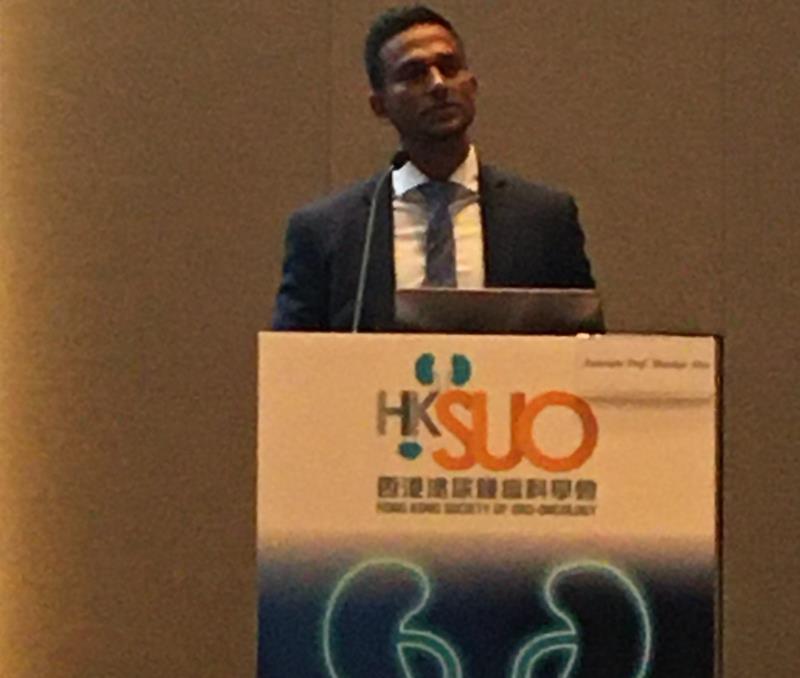
Stereotactic ablative radiotherapy (SABR) has shown promising results in primary renal cell carcinoma (RCC) in recent trials and has become a treatment option for patients with inoperable primary RCC or tumours in solitary kidney, said Dr Shankar Siva of the Peter MacCallum Cancer Centre of Melbourne, Australia, at the Uro-Oncology Asia 2020 conference.
In the FASTRACK trial in patients with inoperable primary RCC (n=37), SABR (<5 cm RCC, 26 Gy/1 fraction; ≥5 cm RCC, 42 Gy/3 fractions) using a 3D-conformal technique resulted in 100 percent, 89 percent and 92 percent rates of freedom from local progression, distance progression and overall survival (OS) at 2 years, respectively. Grade 3 treatment-related toxicity (fatigue) was reported in 3 percent of patients, while 18 percent had no treatment-related toxicities. [BJU Int 2017;120:623-630; Int J Radiat Oncol Biol Phys 2014;90:1061-1068]
Although evidence supports SABR as a viable treatment option, there is a lack of international consensus on the treatment of primary RCC with stereotactic body radiation therapy (SBRT). [Future Oncol 2016;12:637-645]
A pooled analysis using data retrieved from the IROCK (International Radiosurgery Oncology Consortium for Kidney) consortium database showed that SABR achieved 97.8 percent, 95.7 percent, 82.1 percent and 77.4 percent rates of local control (LC), cancer-specific survival (CSS), OS and progression-free survival (PFS) at 2 years, respectively, in patients with primary RCC (n=223; mean age, 72.0 years; Eastern Cooperative Oncology Group [ECOG] 0–1; baseline estimated glomerular filtration rate [eGFR], 59.9 mL/min/1.73 m2). [Cancer 2018;124:934-942]
A mean reduction in eGFR of 5.5 mL/min/1.73 m2 was observed post-treatment, with no significant difference in reduction between single-fraction SABR and multi-fraction SABR (-6.1 mL/min/1.73 m2 vs -4.9 mL/min/1.73 m2; p=0.66). Dialysis was required in 2.7 percent of patients.
“In the IROCK Solitary Kidney study, patients with bilateral kidneys [n=138] harbouring larger tumours and lower baseline eGFR had slightly worse distant control [DC], CSS and OS at 2 years compared with those in the solitary group [n=81] [DC, 93.2 percent vs 95.7 percent; p=0.357] [CSS, 94.3 percent vs 98.2 percent; p=0.047] [OS, 81.5 percent vs 82.4 percent; p=0.356]. LC rates were good in both bilateral and solitary groups [97.8 percent vs 98.0 percent; p=0.923] and both groups had similar reductions in eGFR [mean, -5.3 mL/min/1.73 m2 vs -5.8 mL/min/1.73 m2]. These findings suggest that SABR is a viable treatment option for patients with RCC in a solitary kidney,” Siva said. [J Urol 2019;201:1097-1104]
“Consistent results for all outcomes at 3 years were demonstrated when comparing larger tumours with small tumours [median, 4.9 cm vs 2.9 cm] [DC, 87.0 percent vs 100 percent; p=0.006] [CSS, 91.4 percent vs 96.2 percent; p=0.224] [OS, 72.3 percent vs 84.6 percent; p=0.294] [LC, 96.6 percent vs 98.5 percent; p=0.512]. This reflects a prognostic significance for RCC,” he said. [Siva S, et al, ASTRO 2019, abstract 2593]
“In terms of the future use of SABR, FASTRACK II, an ongoing single-arm, multi-institutional phase II study, aims to validate the efficacy of SABR in 70 patients with primary RCC,” he said. [BMC Cancer 2018;18:1030]
An interim safety analysis of the RAPPORT trial showed that SABR in combination with pembrolizumab was well tolerated in a small cohort of patients with oligometastatic RCC (n=30). A patient had durable remission after 6 months of pembrolizumab. “This is clearly a synergistic effect of both treatments. Short duration of adjuvant anti–PD-1 immunotherapy is likely to be justified,” Siva suggested. [Radiother Oncol 2019;133:S137; Clin Genitourin Cancer 2017; doi: 10.1016/j.clgc.2017.08.009]